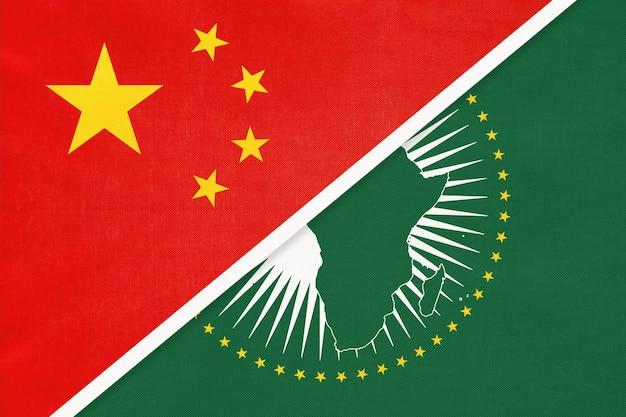Introduction
Education lies at the heart of sustainable development, economic prosperity, and human freedom. For Africa—a continent brimming with youthful potential—the expansion of quality education is both a right and a necessity. With over 50% of its population under the age of 20, Africa has a demographic edge that, if nurtured through education, could propel the continent into a new era of growth and transformation.
Yet, despite significant progress over the past two decades in increasing enrollment, many African children and youth are still denied access to quality education. Millions remain out of school, and many who are in school do not acquire foundational literacy and numeracy skills. At the same time, a digital revolution is underway—reshaping economies, jobs, and ways of learning. This moment presents a critical opportunity for Africa to close the education gap by embracing digital technologies while improving learning environments and teaching quality.
This article explores the current state of education access and quality in Africa, examines key challenges and inequalities, and identifies emerging opportunities—particularly through digital innovation—to create inclusive, future-ready education systems.
The State of Education in Africa
Over the last 25 years, African countries have made tremendous gains in education access. The abolition of school fees in many countries, expansion of school infrastructure, and sustained donor support have driven dramatic increases in primary and, to some extent, secondary school enrollment. Initiatives such as the African Union’s Continental Education Strategy for Africa (CESA 16-25) and SDG 4 have provided important policy frameworks.
However, progress in enrollment has not been matched by progress in learning outcomes. According to UNESCO and the World Bank, nearly 90% of children in sub-Saharan Africa are not able to read and understand a simple story by age 10—a phenomenon described as the “learning crisis.” Secondary and tertiary education access remains highly limited, particularly for girls, children with disabilities, and rural populations.
Additionally, education systems face severe constraints in terms of teacher shortages, overcrowded classrooms, poor infrastructure, outdated curricula, and weak governance. Where education is available, it is often of poor quality—leaving students unprepared for the demands of modern economies or civic life. At the same time, digital literacy and 21st-century skills remain inaccessible to the vast majority, limiting young Africans’ opportunities in the global digital economy.
Core Challenges in Expanding Quality and Digital Education
The first major challenge is inequality in access. Deep disparities exist between urban and rural regions, rich and poor households, and boys and girls. In many conflict-affected or fragile states, schools are closed or destroyed, teachers are underpaid or absent, and children are more likely to be working or displaced than studying. Girls face additional barriers such as early marriage, menstruation stigma, and domestic responsibilities, while children with disabilities often face total exclusion.
Second, education financing remains insufficient and inefficient. Most African governments fall short of the global benchmark of allocating 20% of national budgets to education. Donor contributions, while helpful, are often fragmented and tied to specific projects. Furthermore, much of the available funding goes toward salaries and administrative overhead, with little left for quality improvement, innovation, or infrastructure.
Third, teacher capacity is alarmingly low. Many teachers lack adequate training or ongoing professional development. In some countries, large proportions of teachers themselves fail basic proficiency tests. As a result, pedagogy remains focused on rote learning, exam cramming, and outdated content. Teacher absenteeism, poor motivation, and limited accountability further erode quality.
Fourth, there is a major infrastructure and technology gap. Many schools lack electricity, internet access, or even textbooks. During the COVID-19 pandemic, this digital divide became starkly evident: while some learners transitioned to online or broadcast-based learning, the majority in Africa were left behind due to lack of devices, connectivity, or digital skills.
Fifth, education systems often lack resilience and adaptability. Rigid curricula, centralized administration, and limited use of data make it difficult to respond to crises, innovation, or shifting labor market needs. This inertia hampers reforms and prevents inclusive, learner-centered approaches from taking root.
Opportunities and Innovations in Digital and Quality Education
Despite these challenges, Africa is experiencing a wave of innovation aimed at transforming education delivery, expanding access, and improving outcomes.
One of the most powerful trends is the growth of digital learning platforms. From mobile-based apps and SMS learning tools to full-scale online learning management systems, African governments and innovators are leveraging technology to bridge access gaps. Platforms like Eneza Education (Kenya), uLesson (Nigeria), and the African Virtual University are reaching millions with curriculum-aligned content, interactive lessons, and exam prep materials. These tools are especially useful in reaching learners who are out of school or in remote areas.
Several governments have launched or scaled national e-learning platforms, radio and television classes, and digital teacher training programs. For example, Rwanda’s Smart Classrooms initiative and South Africa’s DBE TV are making educational content more widely accessible. Ethiopia and Ghana have invested in national education technology strategies to build digital infrastructure and promote blended learning.
Public-private partnerships are also playing a key role. Companies such as Microsoft, Google, and MTN are investing in digital skills training, device access, and connectivity in partnership with ministries of education. Donor agencies are supporting EdTech innovation hubs and teacher training initiatives across the continent.
Another important area is the shift toward competency-based and learner-centered education. Countries like Kenya, Rwanda, and Zambia are reforming curricula to emphasize creativity, collaboration, critical thinking, and digital literacy. These approaches aim to make learning more relevant, engaging, and future-oriented.
Data and artificial intelligence are also beginning to support education delivery. Real-time learning analytics, AI tutors, adaptive assessments, and education dashboards are helping policymakers and educators make data-driven decisions and personalize learning experiences.
Inclusion and Equity Must Remain Central
While technology opens exciting possibilities, it must be used to reduce—not exacerbate—inequality. Digital education cannot replace in-person teaching, particularly for young children or learners with special needs. Instead, digital tools should be integrated into broader strategies to improve teaching quality, learner support, and system resilience.
Ensuring inclusion means addressing affordability, accessibility, and representation. Content must be culturally relevant, available in local languages, and designed for learners with diverse needs. Devices and internet access must be subsidized or made available through schools and community centers. Girls must be explicitly included in digital education strategies, with attention paid to safety, confidence-building, and leadership development.
Similarly, efforts to expand digital education must prioritize the role of teachers. Technology should empower, not side-line, educators. Teacher training in digital pedagogy, content creation, and classroom integration is essential. Peer learning networks, mentoring, and professional development platforms can support this transformation.
Country-Led Pathways for Scalable Change
Across Africa, there is growing recognition that the future of education must be inclusive, digital, and skills-based. Governments are drafting digital education strategies, integrating EdTech into national curricula, and engaging youth in co-creation processes. These efforts must be accelerated, funded, and embedded within broader education reforms.
Strategies for success include expanding school connectivity through public infrastructure investments and universal service funds; subsidizing device access for teachers and learners; building local digital content ecosystems; and establishing national EdTech innovation hubs to pilot and scale what works.
Equally important is governance and leadership. Ministries of education need stronger technical capacity to regulate, evaluate, and scale digital solutions. Public-private coordination, community engagement, and accountability mechanisms must be strengthened.
Long-term change will also require political will, regional cooperation, and continental platforms. The African Continental Free Trade Area (AfCFTA) and the AU’s Digital Transformation Strategy offer frameworks for aligning national efforts, standardizing digital credentials, and promoting cross-border education services.
Education for Africa’s Future
Education in Africa stands at a critical inflection point. The continent’s demographic growth, technological evolution, and rising demand for skills demand a bold reimagining of how education is delivered, who it serves, and what it prepares learners for.
Expanding access to quality and digital education is not just a development goal—it is a survival strategy for a continent that must equip its youth to solve its problems, drive innovation, and compete globally. The path forward will not be easy, but it is possible. By investing in inclusive, learner-centered, and technology-enabled education systems, Africa can unlock the full potential of its greatest asset: its people.



